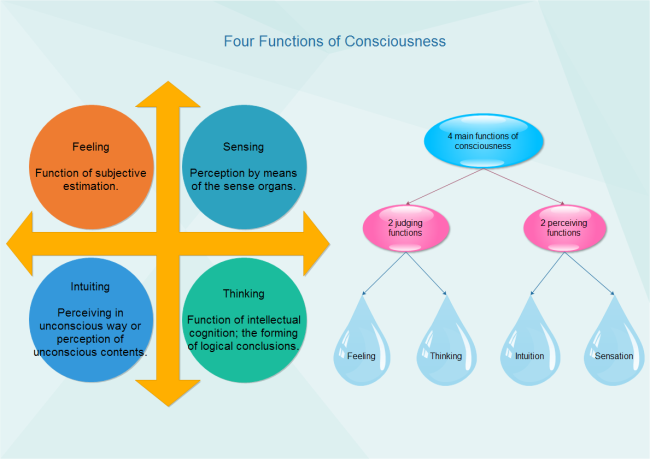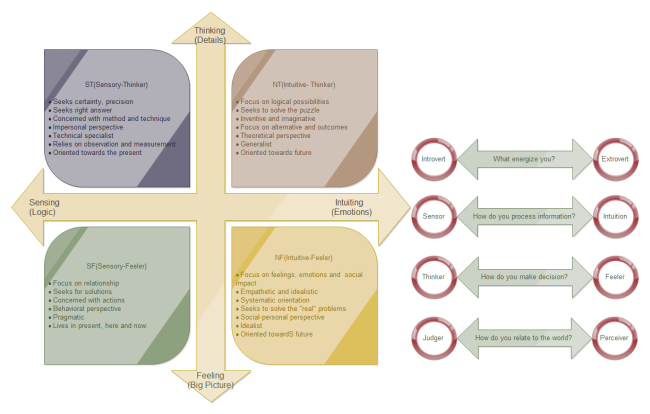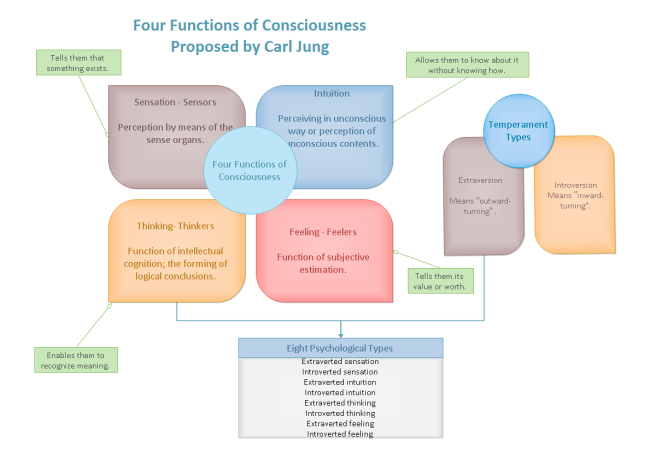Matrix Diagrams about Personality Types and Communication
It is well said that if you start communication with a concern for people, they listen. If you are able to use your own strengths and preferences, and in turn appreciate the others' strengths and preferences, it is possible to truly carry out better communication. Then the question comes: how can we know people's strengths and preference? Here is one simple solution, to learn people's personality.
Matrixes about Carl Jung's Proposal on Personality
Four Main Functions of Consciousness
Carl Jung proposed four main functions of consciousness including 2 perceiving functions: Sensation and Intuition and 2 judging functions: Thinking and Feeling.
Based on Jung's theory, the psyche is an apparatus for adaptation and orientation, and consists of a number of different psychic functions. Among these he distinguishes four basic functions of conciseness:
Thinking and feeling functions are rational, while sensation and intuition are non-rational.

When the functions of consciousness are combined with the two temperament types, there are eight psychological types:
Features and Communication Skills for Different Personality Types
According to Jung's 4 functions of consciousness, people's features of personality fall into 4 categories as shown in the following matrix diagram.

People differ and misunderstanding may occur. It is necessary to communicate in a more interesting and considerate way.
To present information to intuitive type of people, show the big picture since they are rational. They want the main point. As reading they tend to read between the lines like abstraction and symbols.
When presented with ideas, the sensor's natural reaction is to focus on the specifics and often identify what is missing. They are literal, and tend to look for the concrete data in any communication.
When talking with feelers, the thinker should remember that feelers prize harmony and would prefer to agree, if given a chance. Therefore, we had better start a conversation with feelers by mentioning the points of agreement. Awareness of common points can help discuss, negotiate and eliminate differences in a mutually beneficial way.
A feeler should emphasize logic and rationality in the conversation with thinkers. For thinkers, rules and logic prevails agreement. To initiate a discussion with thinker, a feeler may benefit from outlining a logical progression and allowing him to debate even without reaching consensus. Of course, the above mentioned skills are just a few of the relevant research results.
In addition to the application into communication promotion, personality analysis can also boost learning and self-development. You can learn more about this topic in article: Infographics about Color Personality and



